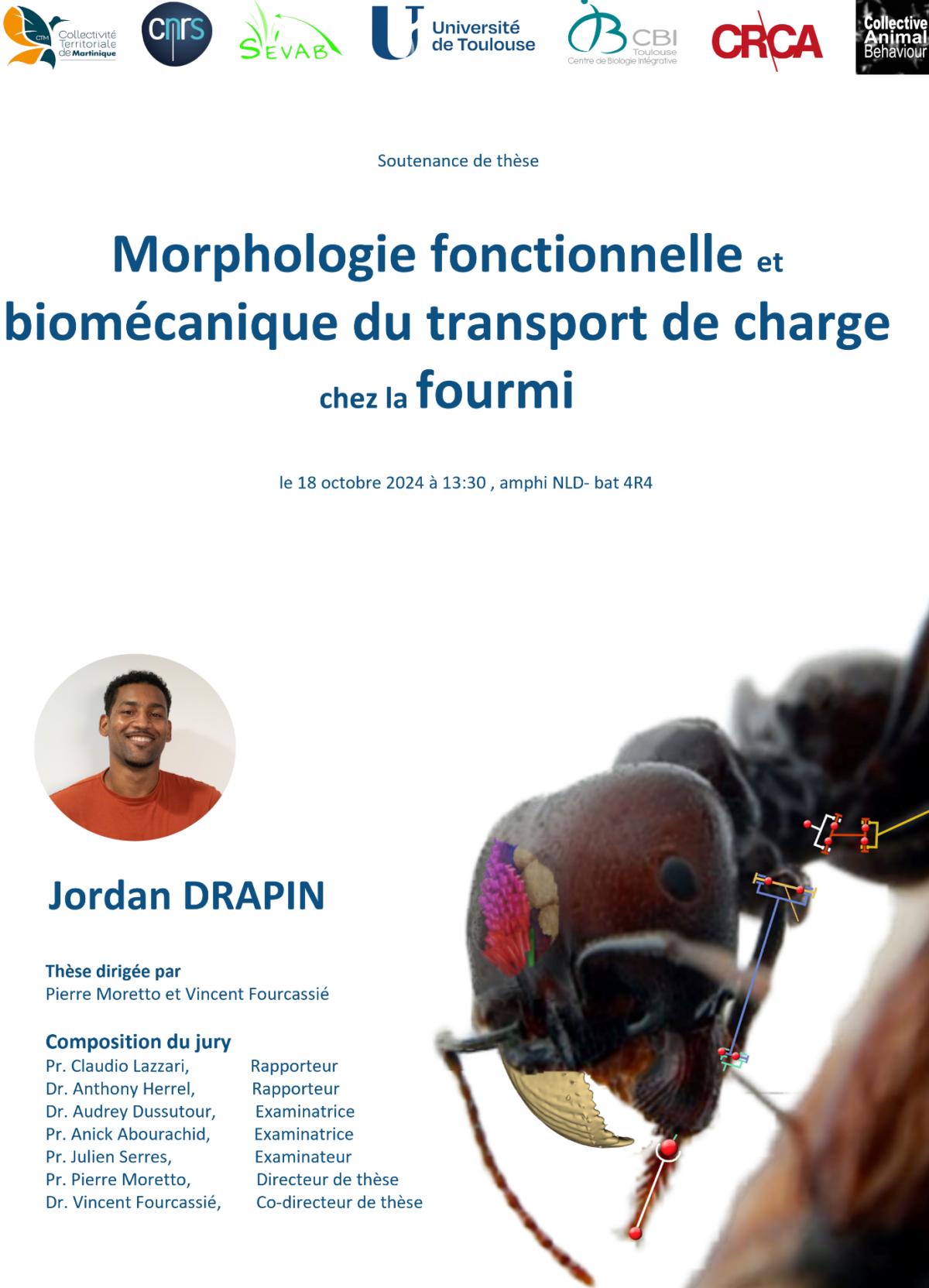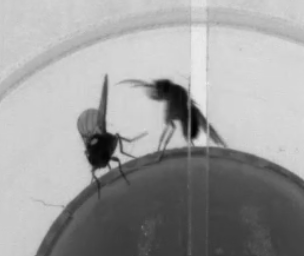![]() Defense in french
Defense in french
![]() Zoom link : https://cnrs.zoom.us/j/91517327506?pwd=222uKN9CfbNWporpa4RkpSIS1YtGJQ.1
Zoom link : https://cnrs.zoom.us/j/91517327506?pwd=222uKN9CfbNWporpa4RkpSIS1YtGJQ.1
Team : CAB (Collective Animal Behaviour) – CRCA-CBI
Supervisors : Pierre Moretto (CRCA-CBI) and Vincent Fourcassié (CRCA-CBI)
Committee members :
- Anthony Herrel, Rapporteur
- Claudio Lazzari, Rapporteur
- Annick Abourrachid, Examinatrice
- Audrey Dussutour, Examinatrice
- Julien Serres, Examinateur
- Vincent Fourcassié, Directeur de recherche
- Pierre Moretto, Directeur de recherche
Abstract :
Division of labour in social insects has long been a topic of interest in ethology. Among social insects, some species are characterized by a polymorphism of the worker caste, where the role of individuals in the colony is often directly linked to their external morphology. In some of these species, for example, the largest individuals, generally called soldiers, defend the colony. However, it is sometimes more difficult to establish this link for certain tasks, such as load-carrying in ants. A case in point is he granivorous ant Messor barbarus that we studied in this thesis. This species shows a division of labour in load carrying among workers of its different morphs called minor, media and major, that cannot be explained simply by differences in their external morphology. Our hypothesis is that this division of labour could be explained by differences in the characteristics of the muscular system of the individuals, as well as by the organization and biomechanical properties of their exoskeleton.
In order to test this hypothesis, we have used in this work a biomechanical approach to study load-carrying behaviour in ants, which integrates functional morphology and even goes so far as to create numerical models inspired by biorobotics. Biomechanics has always been applied to understanding the mechanisms that generate movement and their efficiency. It can now also offer realistic simulations that can be used, for example, to generate locomotor patterns that optimize a constraint. Comparison with experimentation can then provide answers to certain hypotheses about the emergence of an individual, or even collective, locomotor pattern. This approach is known as reverse engineering. Developed here specifically at the scale of the ant, this approach has enabled us to study the coordination of the different segments of a single individual (part IV), or even several segments in the case of collective transport (part VI), and to address the question of the coordination of the muscles that control the head of an ant when it carries a load in its mandibles (part V).
To achieve these results, which are still preliminary, we developed a realistic digital model of the ant muscular system using the Opensim software, which involved integrating structural data identified through X-ray microtomography (part III) and 3D kinematic data reconstructed from videos acquired by synchronized high-resolution cameras (part IV). Our digital avatar has yet to be completed, but it has already been used to optimize our 3D kinematic data, to discuss the roles assigned to the different muscles of the thorax and to address the dynamic coordination of the different muscles involved in joint control. Ultimately, this model could be developed and adapted for application to workers of different morphologies, such as those found in the species Messor barbarus. It may then be used to explain the origin of the different load-carrying performances observed between individuals of different morphs in this species. It could also provide a link between the different approaches used to understand the origin and underlying mechanisms of ant behavior, i.e., phylogeny, ecology, biology, ethology, biomechanics and biomimetics.






